The Automobile's Indelible Mark on America
As we prepare to celebrate the Fourth of July, our minds turn to thoughts of freedom, independence, and the American dream. This holiday, rich with fireworks, parades and barbecues, commemorates the birth of our nation and the liberties we cherish. Reflecting on the 1950s—a decade often considered the golden age of the American automobile—reveals a unique connection between the freedom symbolized by Independence Day and the transformative power of car ownership during that era.
The automobile's influence on American culture is undeniable. It revolutionized transportation, reshaped cities and suburbs, stimulated economic growth, and transformed social interactions. As we move towards a future with electric and autonomous vehicles, the legacy of the automobile continues to evolve, reflecting the ongoing interplay between technology and culture in shaping the American experience.
The story of the automobile is not just one of mechanical innovation but also of profound cultural transformation. It exemplifies how a single technological advancement can ripple through society, altering the way people live, work, and interact, ultimately becoming an integral part of the cultural identity.
Mobility and Freedom
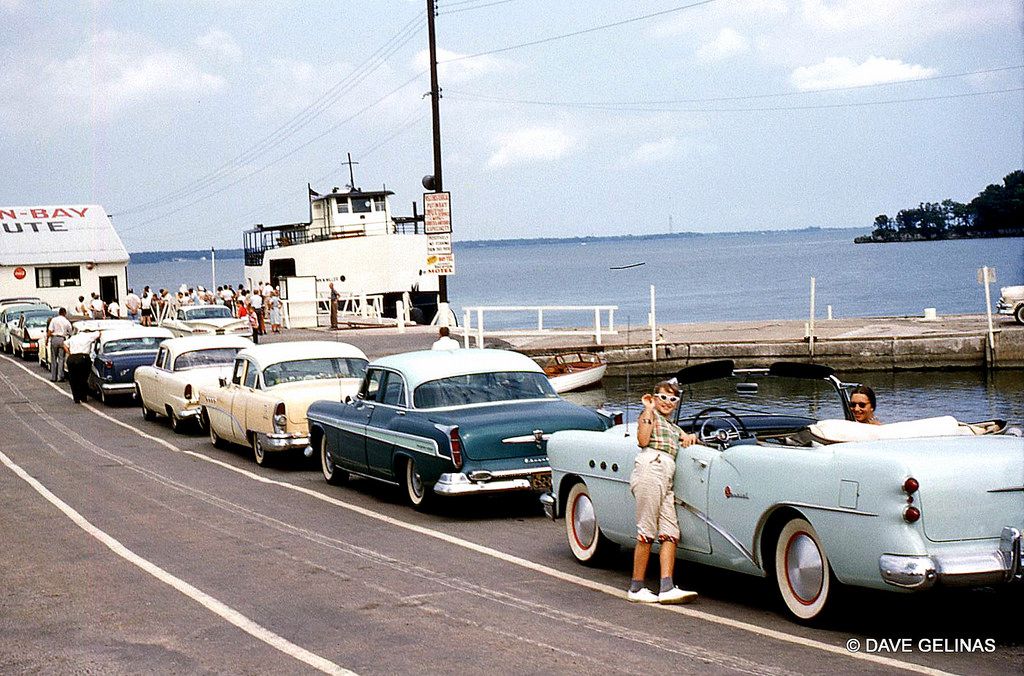
The 1950s were a time of unparalleled growth and transformation in the United States. Emerging victorious from World War II, America entered an era of economic boom, marked by rising incomes, suburban expansion, and technological innovation. Central to this period of prosperity was the automobile, which not only revolutionized transportation but also became a symbol of personal freedom and the American way of life.
This era of economic prosperity was characterized by rising wages, low unemployment, and a consumer-driven economy. The automobile industry played a significant role in this growth, creating millions of jobs and fueling related industries like steel, rubber, and oil. The ability to own a car became a tangible expression of the economic freedom and stability that many Americans enjoyed during this period.
Prior to the automobile, travel was limited by the constraints of horse-drawn carriages and the reach of railroads. Cars enabled individuals and families to travel farther and more conveniently, fostering a new sense of independence. The open road became a symbol of freedom, adventure, and the American dream.
The Interstate Highway System
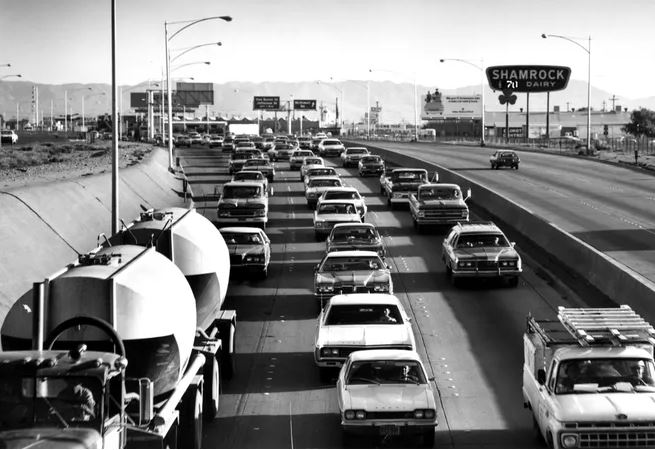
One of the most ambitious infrastructure projects in American history was the creation of the Interstate Highway System, initiated by the Federal-Aid Highway Act of 1956. Championed by President Dwight D. Eisenhower, this vast network of highways was designed to facilitate efficient long-distance travel, promote economic growth, and enhance national defense.
The Interstate Highway System transformed the way Americans traveled, enabling faster and more convenient journeys across the country. It connected cities, suburbs, and rural areas, fostering economic development and making it easier for goods and services to move throughout the nation. The highways also played a crucial role in suburban expansion, allowing people to live farther from their workplaces and commute by car.
Suburban Expansion and Personal Independence
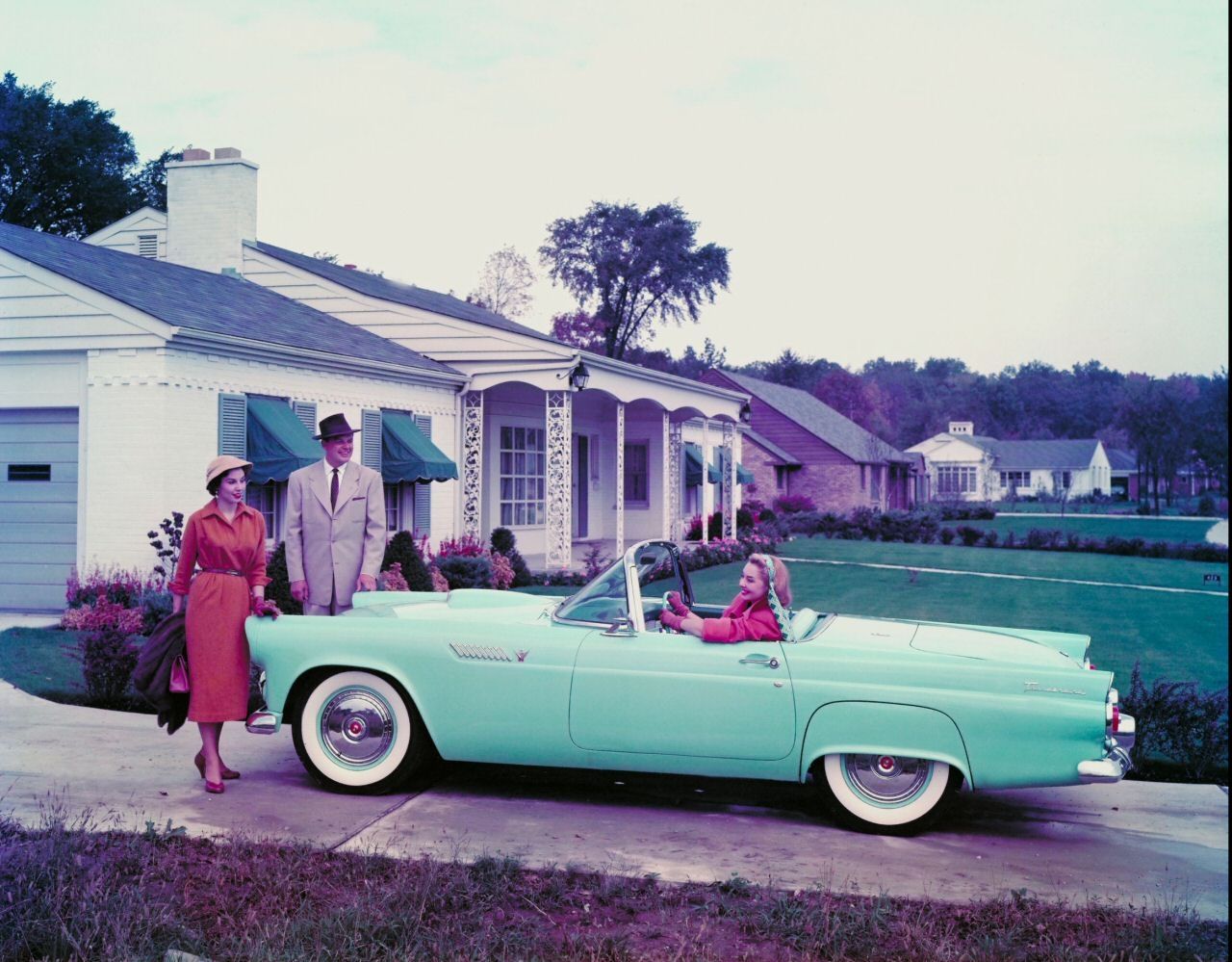
The widespread availability of automobiles facilitated the great suburban migration of the 1950s. As returning veterans took advantage of the GI Bill to buy homes, the suburbs became a symbol of the American dream. Cars enabled families to live farther from city centers while still commuting to work, leading to the development of sprawling suburban communities.
Suburbia represented a new kind of freedom. It offered space, a sense of community, and an escape from the crowded and often polluted cities. The freedom to commute opened up new job opportunities and lifestyles, allowing Americans to achieve a higher standard of living. The car was not just a means of transportation, it was a ticket to the American dream of homeownership and a better life.
Cars also empowered families to explore and experience the vast American landscape. The 1950s saw the rise of the family road trip, with iconic routes like Route 66 epitomizing the spirit of adventure and discovery. Roadside attractions, motels, and diners flourished, catering to the newfound freedom of travel.
Social Freedoms and Youth Culture
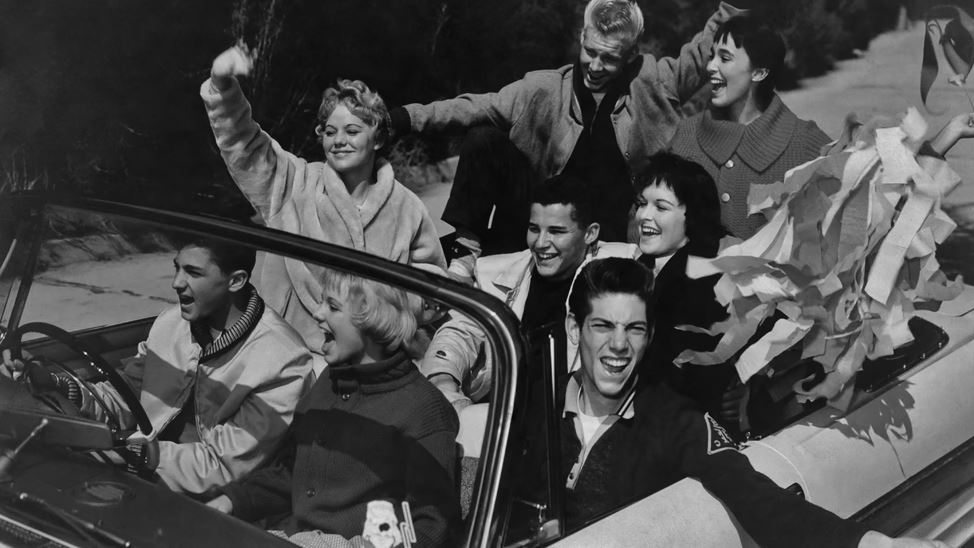
The car became a powerful symbol of personal freedom and social mobility. For teenagers, it was a rite of passage, a tool for independence, and a venue for socializing away from the watchful eyes of parents. The phenomenon of "cruising" and the popularity of drive-in movies and diners are testaments to the automobile's role in shaping youth culture.
The automobile transformed social interactions, particularly in the realm of dating. The "car date" became a popular phenomenon, allowing couples to escape the confines of their homes and enjoy private, romantic excursions. Drive-in theaters, which combined the love for movies and cars, became iconic venues for dates. This newfound mobility also expanded social circles, as people could easily travel to neighboring towns and cities to meet new friends and potential partners.
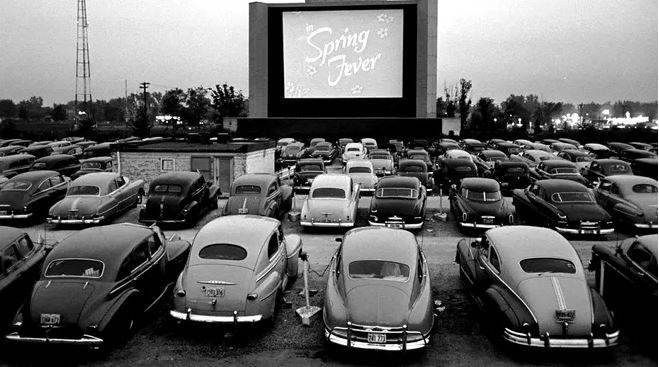
The Automobile as a Symbol of American Identity
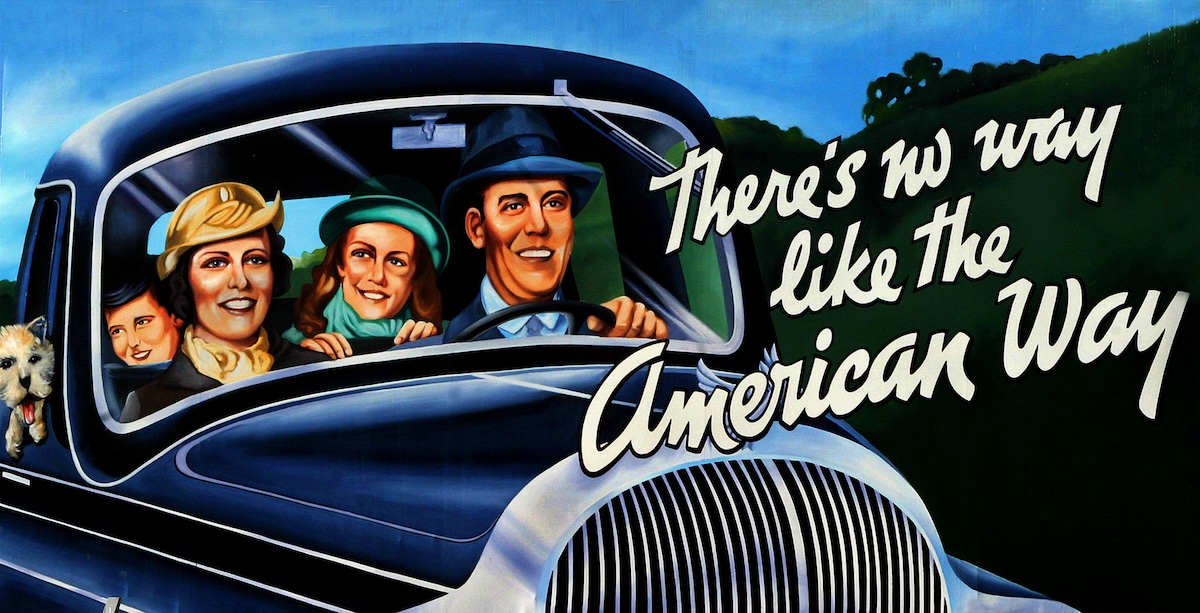
Automobiles were more than just machines—they were an integral part of American identity. They represented progress, innovation, and the pioneering spirit that defined the nation. The sleek, futuristic designs of 1950s cars, with their chrome accents and tailfins, reflected the optimism and forward-looking attitude of the era.
Car ownership also became a status symbol, with different models and brands reflecting one's social and economic standing. The freedom to choose and customize one’s vehicle was an extension of the American values of individuality and self-expression.
Media and Popular Culture
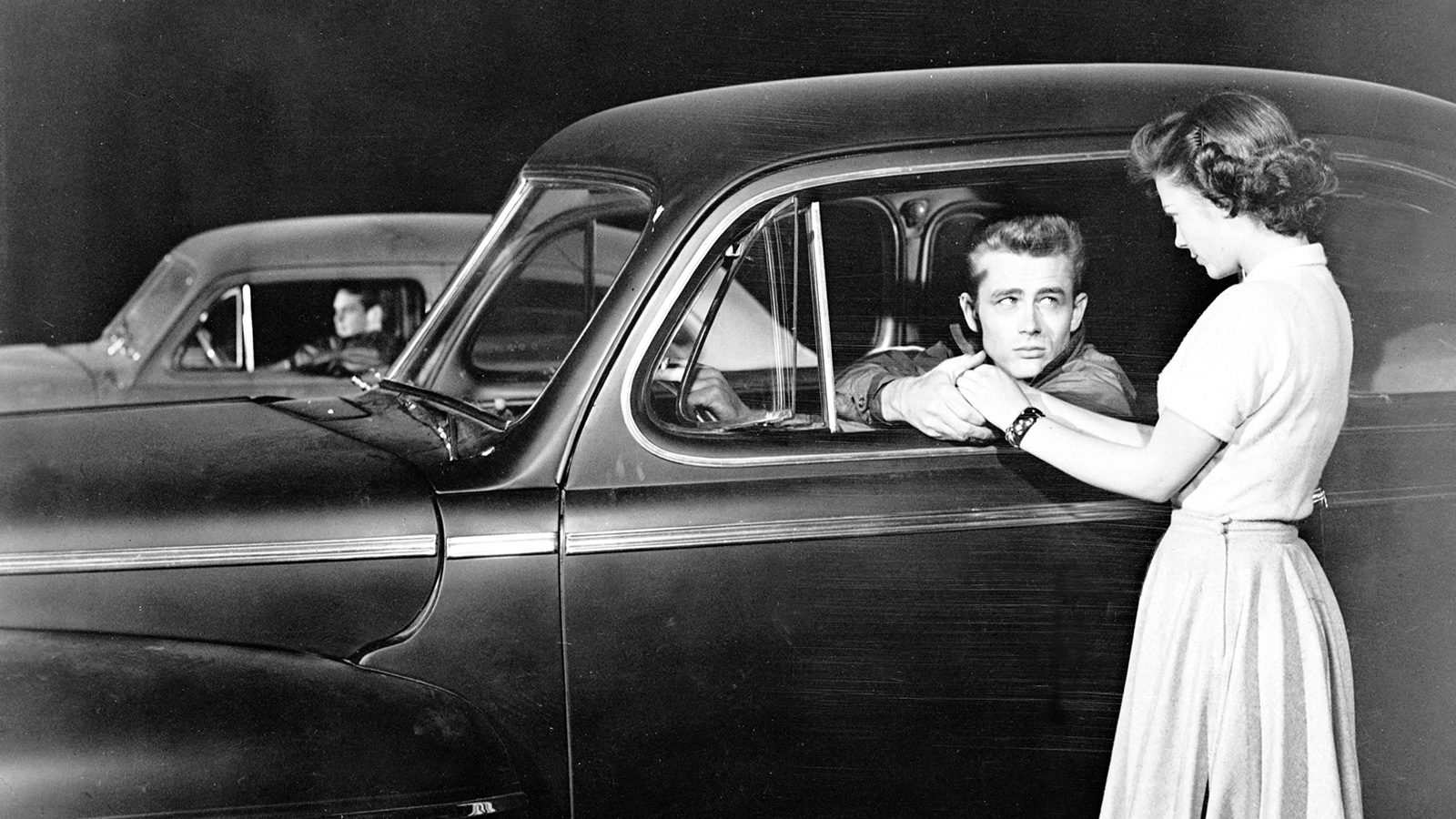
The automobile's impact on American society extends far beyond transportation and infrastructure. It has profoundly influenced media and popular culture, becoming an enduring symbol of adventure and personal identity. From the early days of cinema to contemporary blockbusters, cars have played starring roles in countless films. They symbolize freedom, rebellion, and the pursuit of the American dream, making them ideal vehicles for storytelling.
The 1950s and 60s saw the rise of car-centric films that celebrated the thrill of driving and the allure of the open road. Movies like "Rebel Without a Cause" (1955) featured iconic car scenes that underscored themes of youthful rebellion and freedom. The film's use of a 1949 Mercury Coupe became an emblem of teenage angst and defiance.
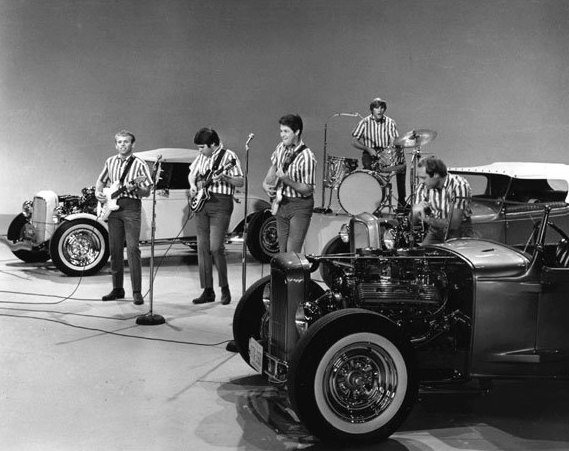
The relationship between cars and music is a symbiotic one, with each influencing the development and culture of the other. The evolution of in-car audio systems has transformed how we experience music, turning our vehicles into personal concert halls on wheels. This blog explores how cars have shaped music consumption, the development of car stereos, and the broader impact on music culture.
The 1960s also witnessed the advent of eight-track tape players in cars, allowing drivers to play pre-recorded music of their choice. By the 1970s, cassette players had become the standard, offering better sound quality and portability. These innovations gave drivers control over their music choices, paving the way for the custom playlists and personal music libraries that we take for granted today.
The Automobile's Indelible Mark on America
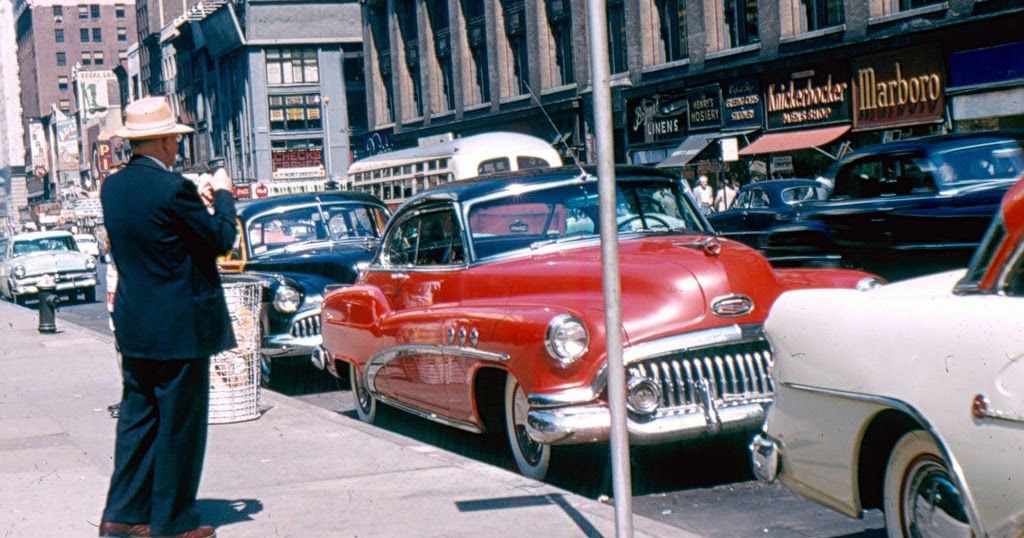
The automobile has undeniably shaped America, transforming it from a land of isolated communities into a unified, mobile society. From the advent of the Model T to the sleek, high-tech cars of today, automobiles have revolutionized how Americans live, work, and interact. They have facilitated suburban expansion, boosted the economy, and influenced urban planning. Highways and interstates now crisscross the country, linking cities and towns, fostering commerce, and enabling the iconic American road trip. This physical connectivity has, in turn, nurtured a cultural unity, with shared experiences and collective memories forged on the open road.
Beyond the practicalities of transportation, the automobile embodies the spirit of American innovation and freedom. It represents the ability to explore new frontiers, seek opportunities, and achieve personal independence. This sense of freedom is deeply ingrained in the American psyche, reflecting the nation's pioneering heritage and its ongoing quest for progress and self-determination. The pride associated with car ownership, from the first family vehicle to the dream car in the garage, speaks to a broader narrative of success and achievement that resonates across generations.
As we celebrate Independence Day, we should also reflect upon the automobile's legacy and recognize its role in shaping the pride of America. It stands as a testament to the country's technological advancements, economic resilience, and cultural evolution. The roar of an engine, the design of a classic car, and the thrill of a journey all symbolize a uniquely American experience. In every car on the road, there is a story of aspiration, innovation, and the enduring pursuit of freedom—a testament to how the automobile has not only shaped America's landscape but also its identity and pride.